Need to find how many translators need for two persons to be able talking to each other.
Given values are
A : 1 2
B : 7 8
C : 4 5
D : 5 6 7
E : 6 7 8
F : 8 9
And the translators which we are looking for are as below
B > E Can translate directly, answer : 0
A > B Can't translate, answer : -1
C > F Need 2 translators C (5)> D(6)> E(8)> F(8), answer : 2
D > F need 1 translator D (6)> E(8)> F(8), answer : 1
And the code written is as below but I don't know how to traverse. Down is the graph picture which the nodes are basically A to F and matched them having same number.
#include <iostream>
#include <algorithm>
#include <string>
#include <vector>
#include <queue>
using namespace std;
#define SIZE 1000
vector<char>* graph;
vector<int> v;
bool vis[SIZE]{ 0 };
int n = 9;
int Search(int start, char ch1, char ch2)
{
int count = 0;
queue<char> v1, v2;
v1.push(ch1); v2.push(ch2);
for (int i = 1; i < n; i++)
{
for (int j = 0; j < graph[i].size(); j++)
{
auto begin = graph[i].begin(), end = graph[i].end();
auto iter1 = find(begin, end, v1.front());
auto iter2 = find(begin, end, v2.front());
auto lang = graph[i][j];
if (iter1 != end &&
lang != v1.front())
v1.push(lang);
if (iter2 != end &&
lang != v2.front())
v2.push(lang);
}
}
fill(vis, vis + SIZE, false);
return count;
}
int main()
{
graph = new vector<char>[n+1];
vector<string> people{ { "A 1 2" }, { "B 7 8" }, { "C 4 5" }, { "D 5 6 7" }, { "E 6 7 8" }, { "F 8 9" } };
vector<string> pairs{ {"B E"}, {"A B"}, {"C F"}, {"D F"} };
vector<int> res;
for (int i = 1; i <= n; i++)
{
for (auto item : people)
{
item.erase(remove(item.begin(), item.end(), ' '), item.end());
for (int j = 1; j < item.size(); j++)
{
int idx = item[j] - '0';
if(i==idx)
graph[i].push_back(item[0]);
}
}
}
for (auto item : pairs)
{
item.erase(remove(item.begin(), item.end(), ' '), item.end());
int count = Search(1, item[0], item[1]);
cout << count << endl;
}
delete[] graph;
}
